Thailand, with its historical and cultural richness, is one of the most remarkable tourist destinations in the world. The country is filled with massive temples, palaces, and natural wonders. The structures in Thailand are of great importance not only for their aesthetics but also for their religious and cultural significance. The places to visit in Thailand are often linked to Buddhist beliefs, and their architectures reflect the deep religious faiths and cultural heritage of the Thai people. The country offers visitors a unique experience with its historical temples, royal palaces, modern structures, and breathtaking natural landscapes.
Thailand’s iconic structures are important symbols that not only display visual beauty but also showcase the traditional lifestyle, beliefs, and cultural values of the Thai people. From Bangkok to Chiang Mai, Phuket to Ayutthaya, these structures, located in various regions, serve as windows for travelers wishing to explore Thailand’s history and culture. Temples, palaces, sculptures, and historical parks offer excellent opportunities to gain in-depth knowledge about Thailand’s long history and rich cultural heritage.
1. Wat Arun (Temple of Dawn)
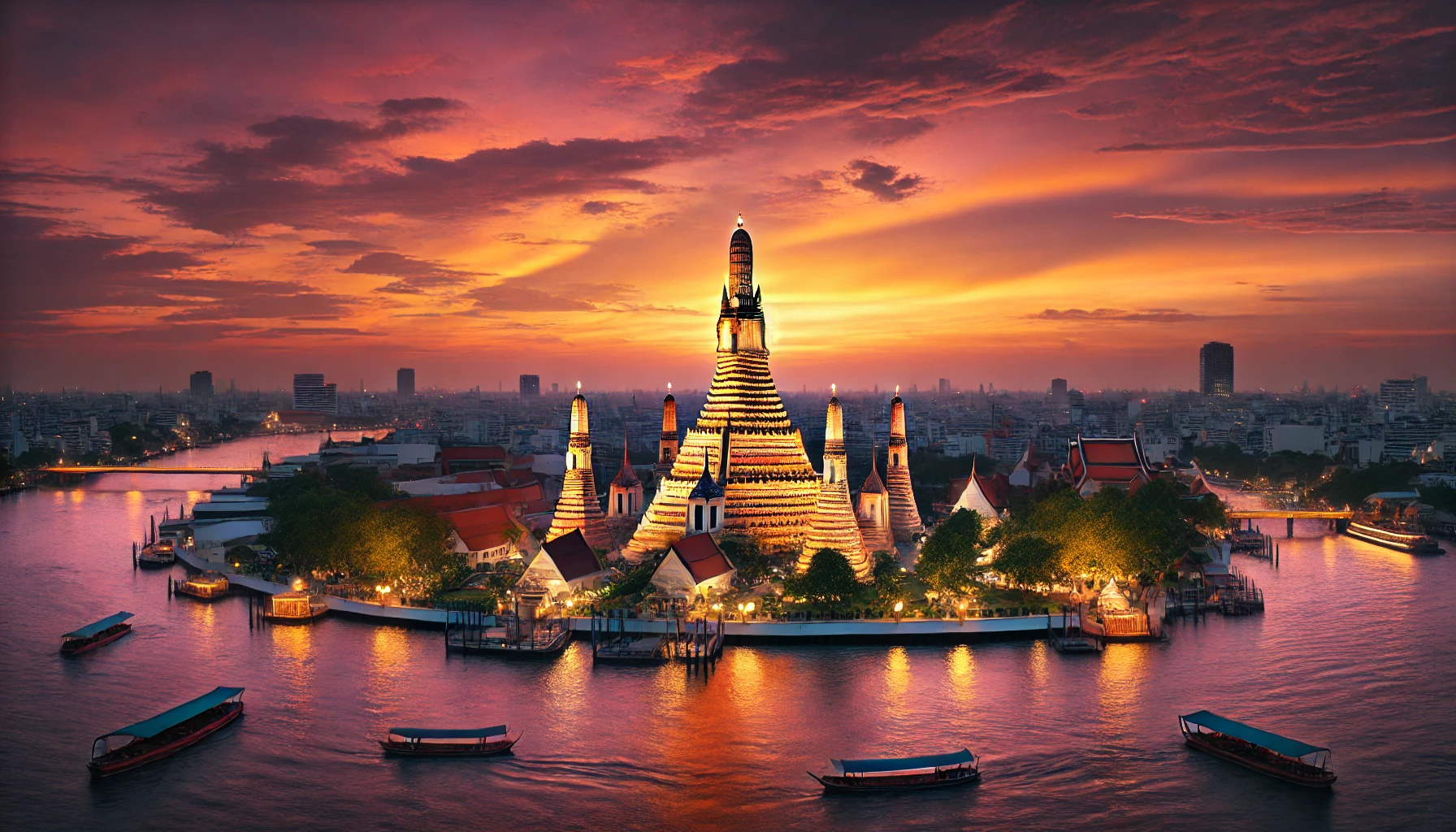
Wat Arun is one of the most famous and iconic temples in Bangkok. Known as the Temple of Dawn, this structure is located on the western bank of the Chao Phraya River and is particularly notable for the stunning views it offers at sunrise and sunset. The most distinctive feature of the temple is its pyramidal towers, which rise towards the sky, exceeding 70 meters in height. These towers reflect the symbolic structure of Buddhist temples commonly seen in Thailand, carrying religious significance. The temple’s name is derived from “Arunanet,” meaning “dawn,” based on the vehicle of the god Aruna from India, who reflects his light towards the sky every morning.
Wat Arun is also praised for its architecture. The temple has a unique design that blends Khmer and traditional Thai architecture. The central tower (prang) of the temple is adorned with Chinese porcelain and is also known as the “Crystal Tower.” The sculptures, bas-reliefs, and intricate craftsmanship found in the temple carry deep traces of Thailand’s history and culture. Visitors have the opportunity to climb steep stairs to reach the top of Wat Arun, where they can enjoy a breathtaking view of Bangkok. As both a religious center and a visual masterpiece, Wat Arun holds an important place in Thailand’s cultural heritage.
2. Wat Phra Kaew (Temple of the Emerald Buddha)
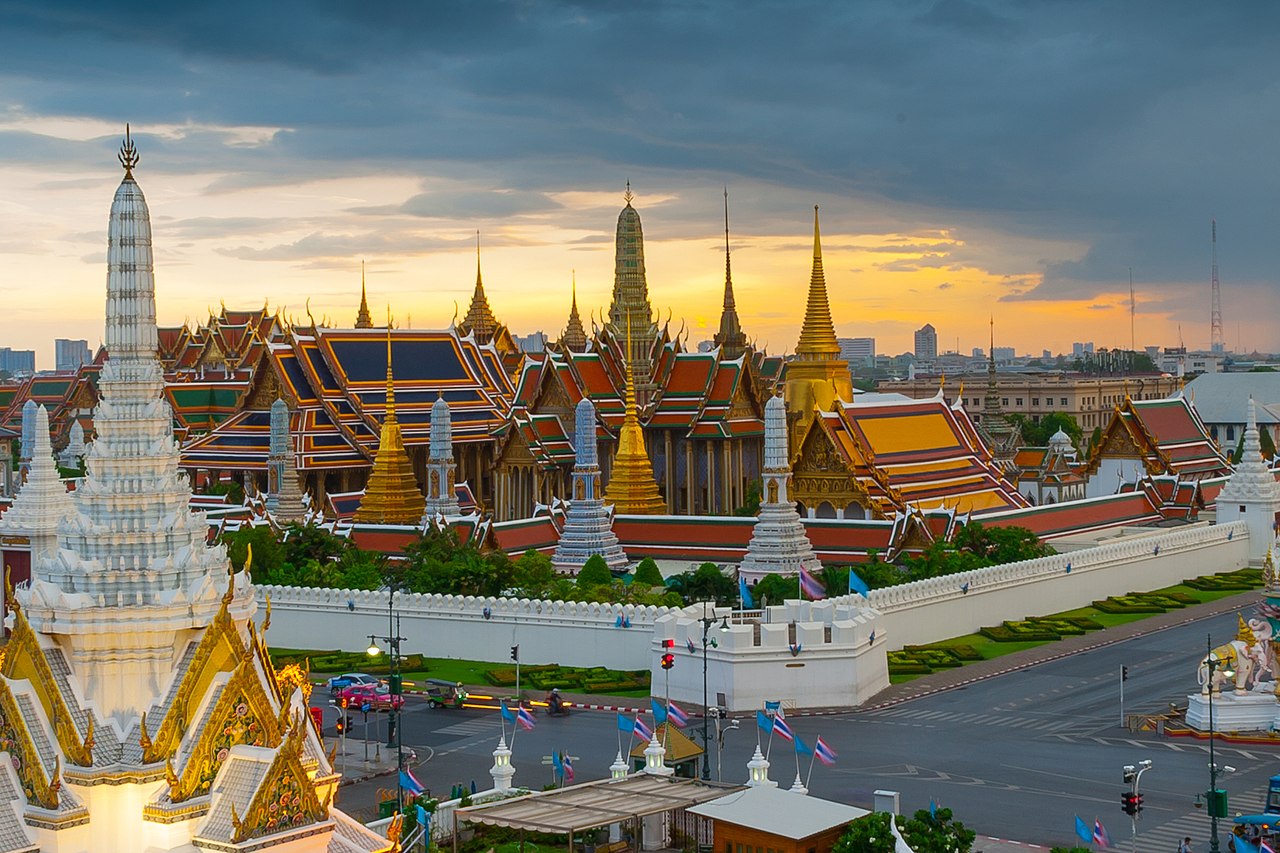
Wat Phra Kaew is one of Thailand’s holiest temples and is located within the Grand Palace complex in Bangkok. The temple is known as the home of the Emerald Buddha statue. This statue is one of Thailand’s most valuable religious symbols and represents the spiritual identity of Thailand. Although the Emerald Buddha is actually made of jasper (not jade), it is commonly referred to as the Emerald Buddha. The statue is specially cared for to ensure the health, safety, and prosperity of the ruler of Thailand, and it is dressed three times a year, according to the seasons. The temple housing the Emerald Buddha holds great religious and cultural significance in Thailand.
The architecture of Wat Phra Kaew is also highly impressive. The temple showcases one of the finest examples of traditional Thai architectural style. The ceramics and mosaics, adorned with intricate craftsmanship and dominated by gold, blue, and green colors, create a stunning beauty both inside and outside the temple. Numerous statues and structural details surrounding the temple reflect Thailand’s religious beliefs and cultural heritage. Part of the Grand Palace complex, Wat Phra Kaew is not only a place of worship but also a symbol of the power and grandeur of the Thai monarchy. This temple is one of the must-see destinations for every tourist visiting Thailand.
3. Grand Palace (The Grand Palace)
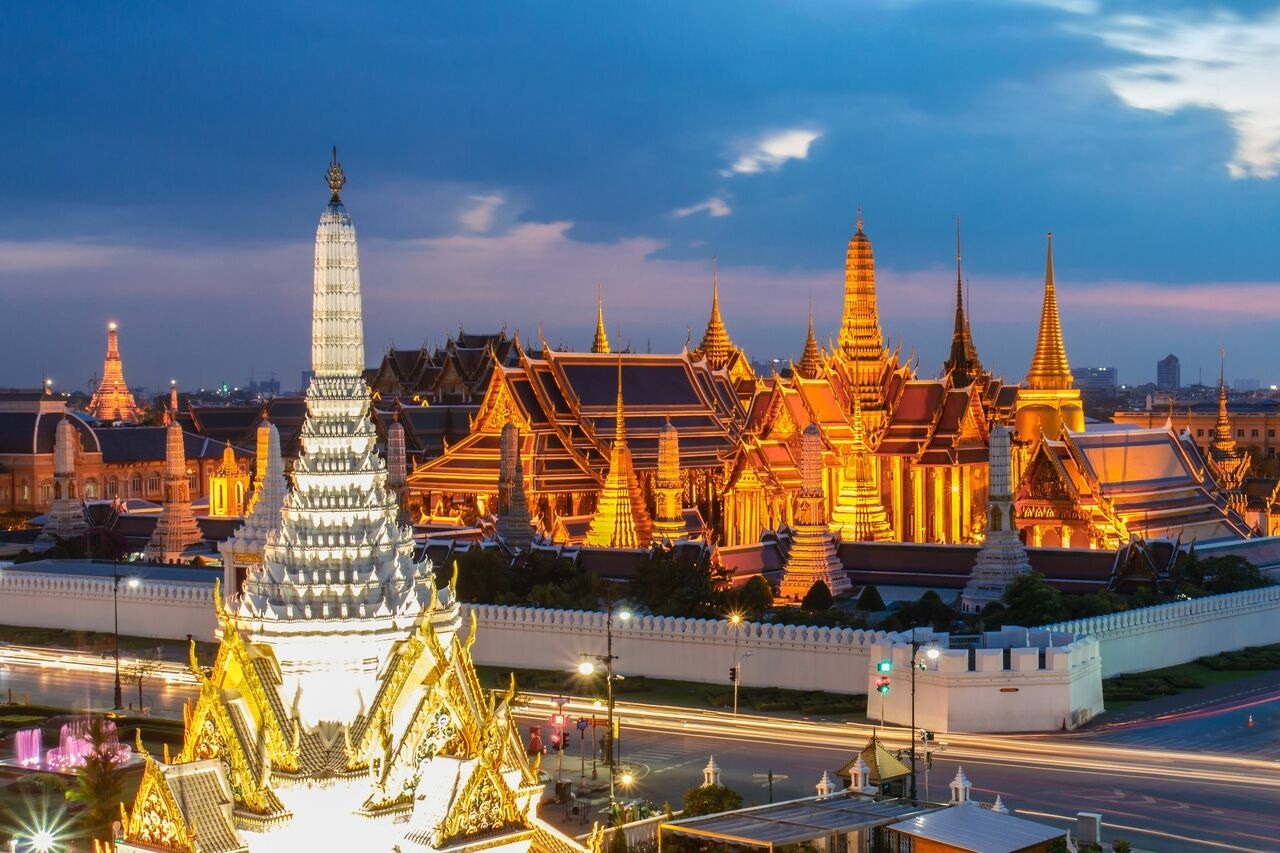
The Grand Palace, located in Bangkok, Thailand, is one of the most famous and important historical buildings in the country. Construction began in 1782, and it served as the residence of the Thai royal family for many years. The palace is noted for its immense size and magnificent architecture. A combination of traditional Thai and Western architectural styles, the palace is adorned with gold leaf, intricately decorated walls, and impressive statues. The Grand Palace is not just a palace but also an important structure symbolizing Thailand’s royal history and culture. It is still used for royal ceremonies and is one of Thailand’s most visited tourist attractions.
The Grand Palace houses several significant buildings, the most prominent of which is Wat Phra Kaew (Temple of the Emerald Buddha). The palace’s rich decorations and gold embellishments are filled with details that reflect the power of the royal family. The largest and most impressive structure within the palace is the Phra Maha Montien Hall, which is decorated with wall paintings depicting the history of Thailand. The walls and gardens outside the palace are also impressive and offer visitors a chance to explore Thailand’s royal past. The Grand Palace is a structure that best reflects Thailand’s respect for its history, culture, and art, making it a major attraction for history enthusiasts and art lovers alike.
4. Wat Pho (Reclining Buddha Temple)
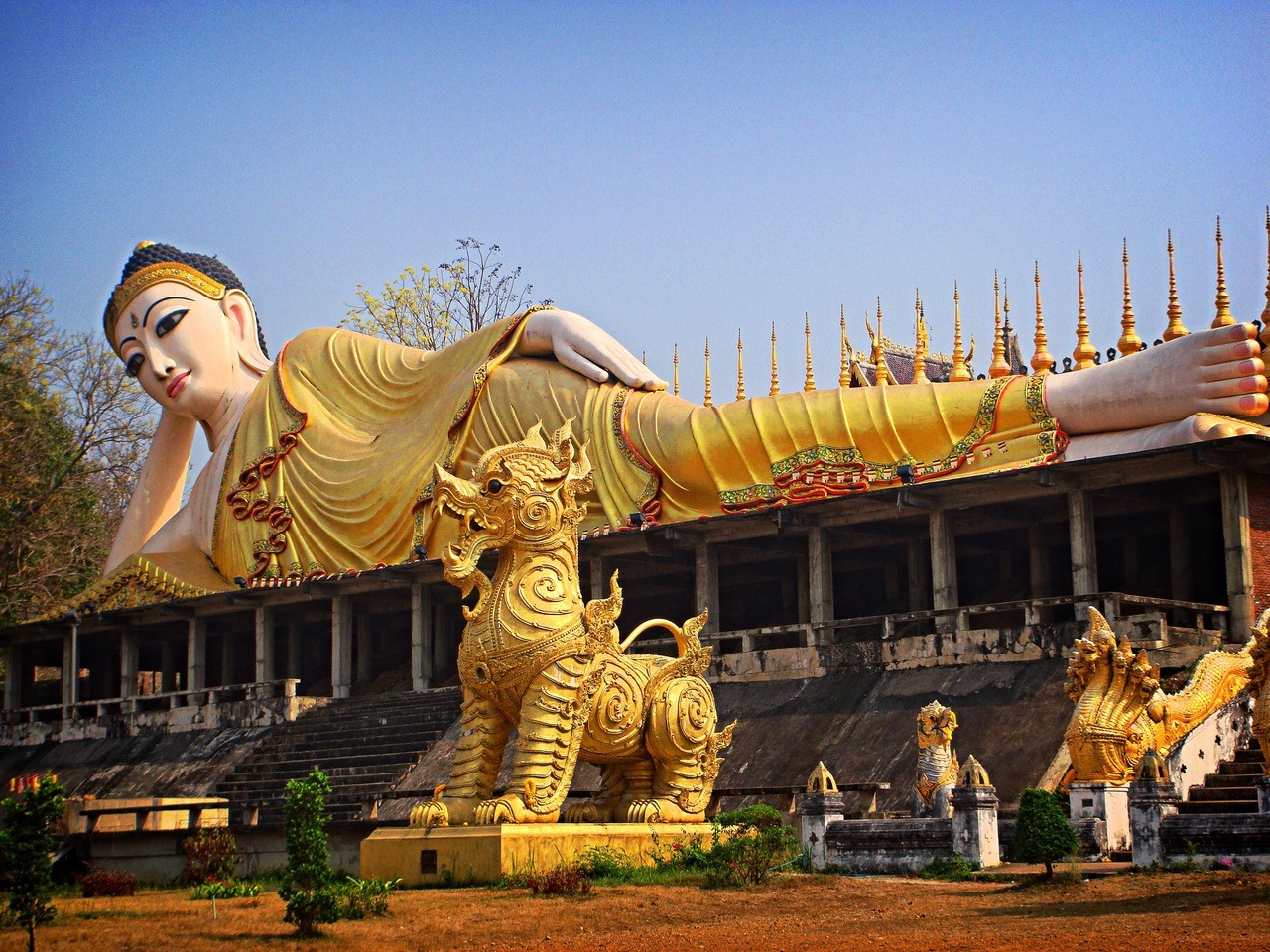
Wat Pho, located in Bangkok, is one of Thailand’s oldest and largest temples and an important religious structure. The temple is also known as the Reclining Buddha Temple because it houses a massive reclining Buddha statue that is 46 meters long and 15 meters high. This statue, the largest reclining Buddha in Thailand, is gilded and intricately detailed. Wat Pho is also famous as the birthplace of traditional Thai massage. Traditional Thai massage techniques are taught here, and the temple plays an important role as an educational center to preserve this cultural heritage.
The architecture of Wat Pho is one of the finest examples of traditional Thai temple design. The temple is adorned with rich gold leaf, ceramics, and colorful mosaics. Other statues in the temple’s courtyard are decorated with details symbolizing Buddhist beliefs, offering visitors the opportunity to explore Thailand’s deep religious and cultural history. The giant reclining Buddha statue inside Wat Pho symbolizes the teachings of Buddhism and the Buddha’s attainment of nirvana. This temple is both a place of religious worship and one of the most important centers of Thai culture.
5. Wat Phra That Doi Suthep
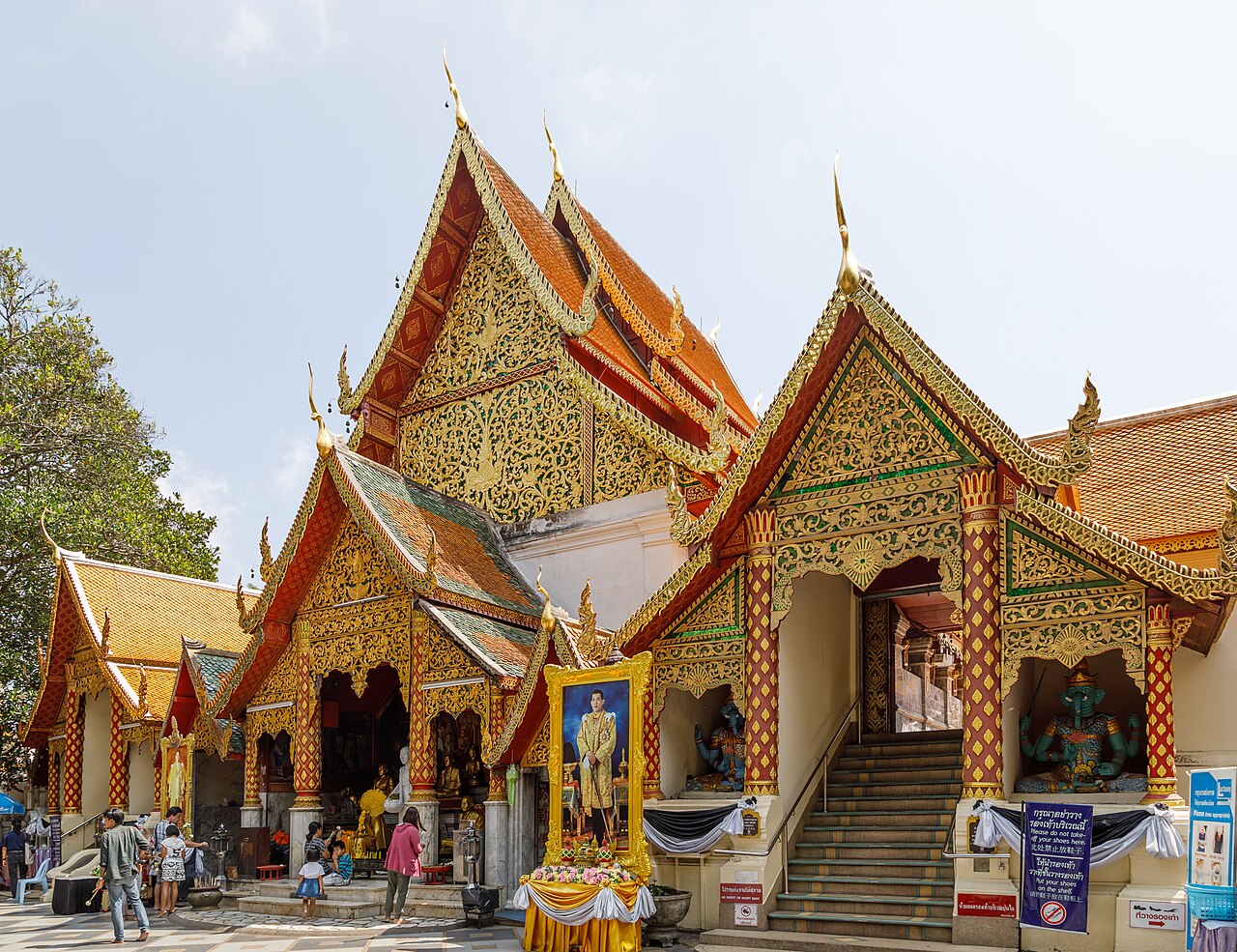
Wat Phra That Doi Suthep is a sacred Buddhist temple located on the summit of Doi Suthep Mountain, near Chiang Mai, Thailand. The temple is one of the most important religious structures in Thailand and serves as a strong symbol of Buddhist beliefs in the southern region of the country. Built in the 14th century, this temple is considered part of a sacred city, which is believed to contain a piece of the Emerald Buddha. The golden stupa of the temple is one of the finest examples of traditional Thai architecture, and its striking golden color can be seen from afar, shining brightly from the mountain.
Wat Phra That Doi Suthep is not only a religious temple but also an observation point with a fascinating view. Located at the mountain’s peak, the temple offers a breathtaking panoramic view of the city of Chiang Mai and the surrounding valley. To reach the temple, visitors must climb a staircase with 306 steps, but once at the summit, the peaceful atmosphere and stunning view make every bit of the effort worthwhile. The temple, beyond being a place of worship for locals and visitors alike, is a unique place to explore Thailand’s cultural heritage and spiritual depth.
6. Ayutthaya Temples
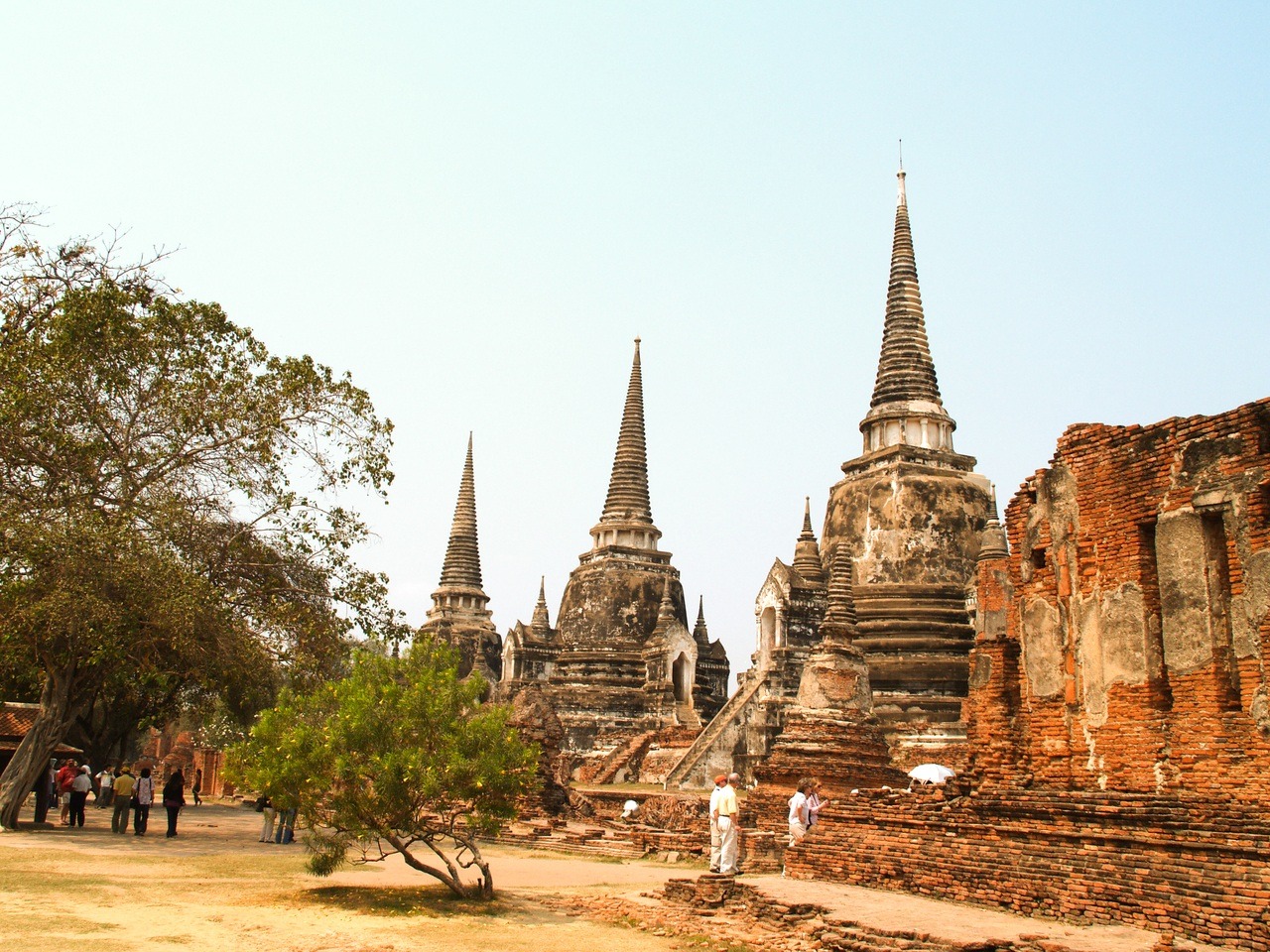
The Ayutthaya Temples are an impressive temple complex located in Ayutthaya, the historic capital of Thailand, and are listed as a UNESCO World Heritage Site. Ayutthaya served as the capital of the Kingdom of Thailand from the 14th to the 18th century and was known as one of the largest and most powerful cities of its time. Today, the temple ruins in the city are filled with elegant structures, massive statues, and impressive stupas that reflect the grandeur of the past. Ayutthaya is an important part of Thailand’s religious and cultural history, with its temples symbolizing the architectural beauty of the era, Buddhist beliefs, and the splendor of royal palaces.
The Ayutthaya Temples form some of the most beautiful temple ruins in Thailand, combining different structures and styles. Wat Mahathat is one of the most famous temples, where the stone structures that once housed Buddha statues and a skull buried among the roots symbolize Ayutthaya’s religious history. Wat Phra Si Sanphet is one of the largest and most important temples in Thailand, used by the royal family for worship. The large Buddha statues found inside and around the temples, along with rich historical narratives and religious figures, bring Ayutthaya’s rich cultural past to life. These temples are well-preserved examples of Thailand’s religious and cultural heritage.
7. Sukhothai Historical Park
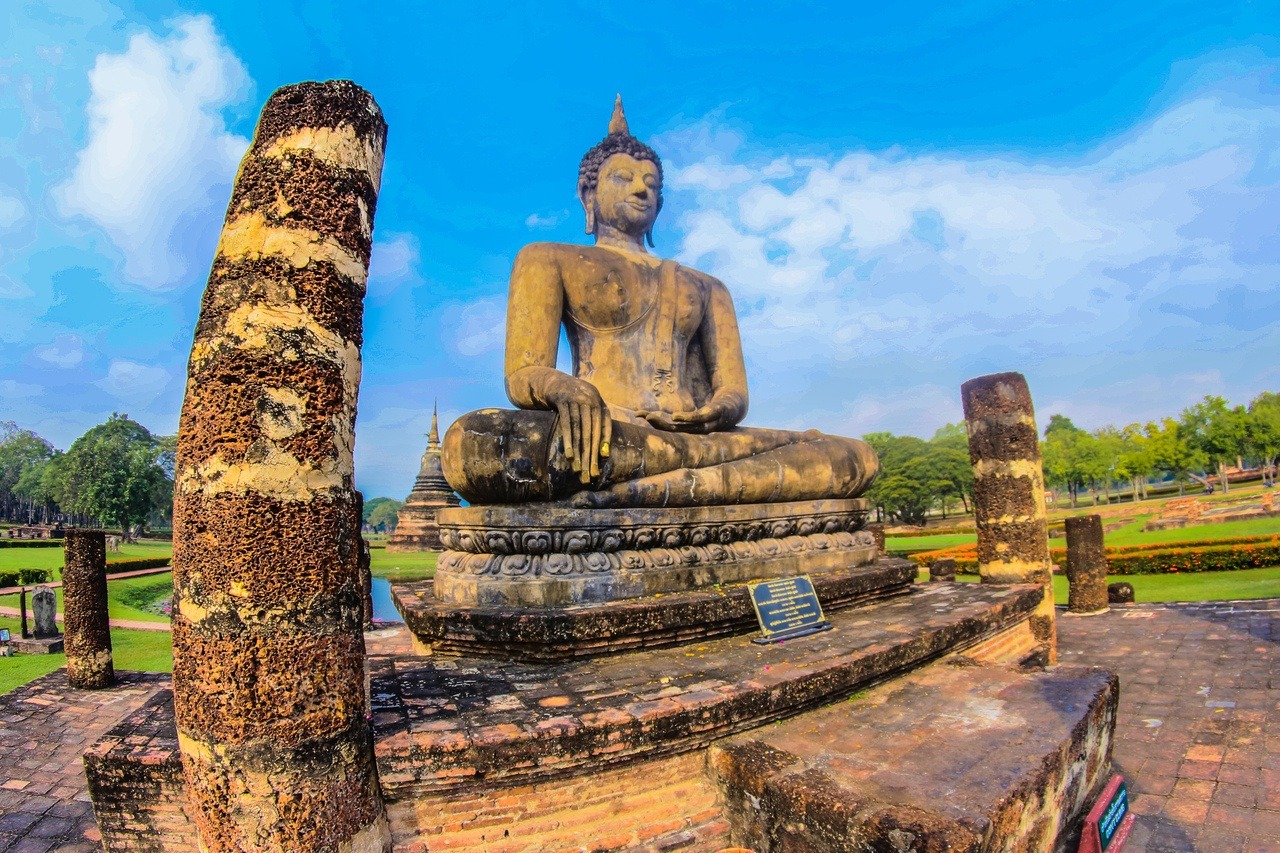
Sukhothai Historical Park is an important historical site that houses the ruins of Sukhothai, the first capital of Thailand, and is listed as a UNESCO World Heritage Site. Founded in the 13th century, the Sukhothai Kingdom symbolizes a period in which the cultural and religious foundations of Thailand were established. The historical park is filled with ancient temples, royal palaces, statues, and other architectural structures, which reflect the artistic and architectural development of the era. One of the most significant features of Sukhothai is its architecture, which represents Thailand’s first golden age and Buddhist beliefs.
The temples and ruins found in Sukhothai Historical Park are some of the finest examples of early Thai architecture and artistic understanding. Wat Mahathat is the park’s most famous and largest temple, where the Buddha statues and temple ruins symbolize the city’s religious and cultural importance. Additionally, other structures in the park, such as Wat Si Chum, are famous for their massive Buddha statues, offering visitors both historical and visual richness. This park is a unique place for those wishing to explore Thailand’s cultural heritage and is an important destination for a deeper understanding of the country’s history.
8. Jim Thompson House
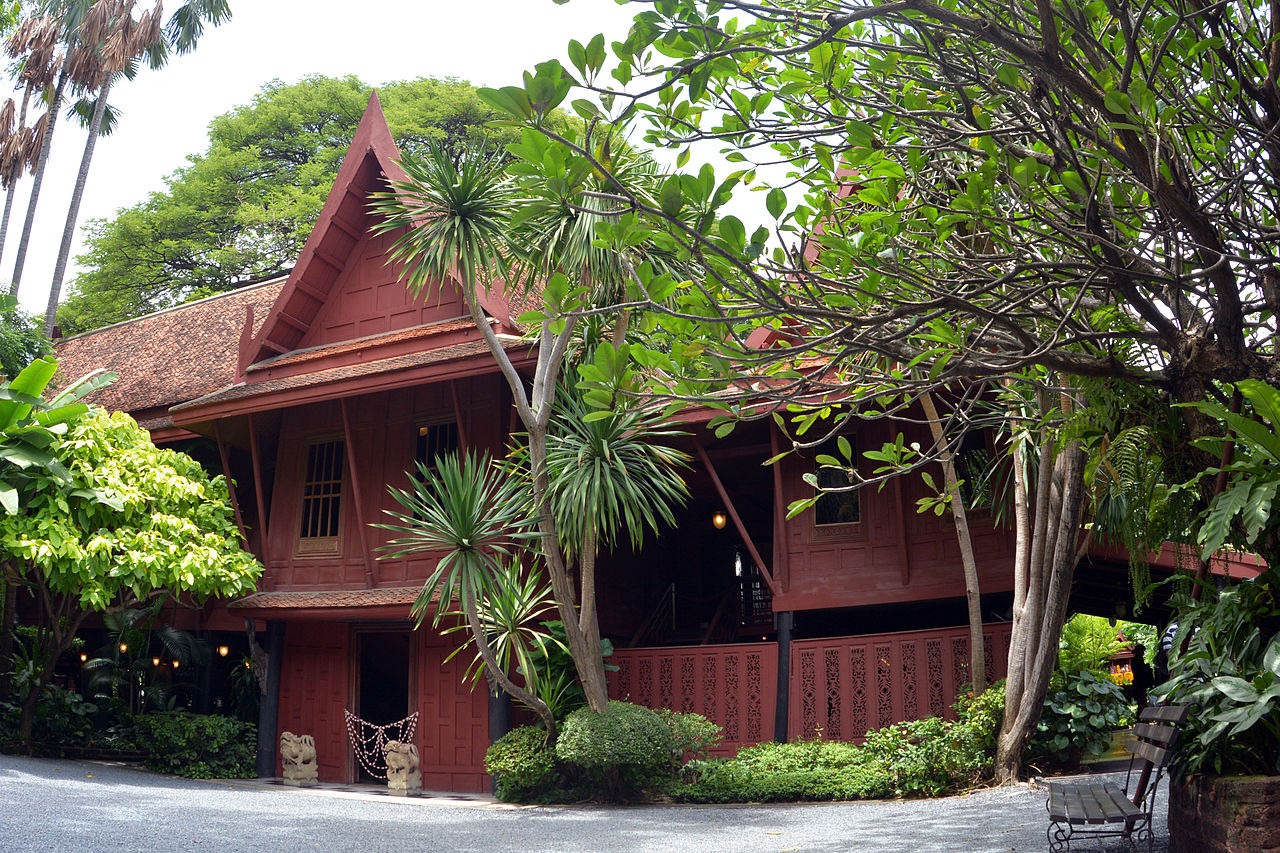
The Jim Thompson House, located in Bangkok, is known as the former home of Jim Thompson, one of the most important figures in the modern history of Thailand’s silk industry. An American businessman, Jim Thompson came to Thailand in the 1940s and gained worldwide fame by revitalizing the traditional silk industry here. In the house he built using traditional Thai architecture, Thompson gathered a collection that reflects Thailand’s cultural heritage. The works displayed inside the house showcase Thailand’s traditional arts, woodwork, and rich silk culture. After Thompson’s disappearance, the house was opened to the public as a museum.
The Jim Thompson House is a wonderful example of traditional Thai architecture, and the tropical gardens surrounding the house offer visitors a peaceful environment. The house is made up of six traditional Thai houses, each carefully restored. These structures reflect the elegant lines and details of traditional Thai architecture, while also incorporating Western elements that reflect Thompson’s personal taste. The museum has exhibits that tell the story of how Thailand’s silk production underwent a revolution and Thompson’s contributions to the field. This house is a unique place for those wishing to explore both Thailand’s traditional culture and modern history.
9. Erawan Temple
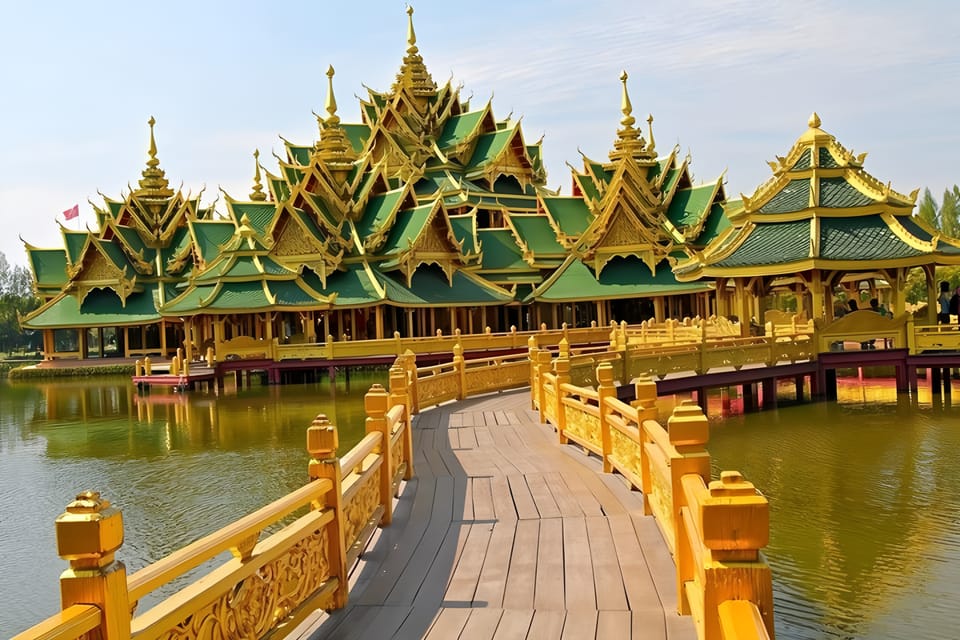
The Erawan Temple, located near the center of Bangkok, is one of Thailand’s most well-known religious structures. The temple is famous for housing a statue of Erawan, a three-headed elephant from Indian mythology. The elephant is considered a symbol of luck and prosperity in Thailand, and visitors to the temple often show respect in front of the elephant statue while praying. Erawan Temple holds great cultural significance, serving not only as a place of worship for the Thai people but also as a major site for tourists. It is a common tradition for visitors to make wishes for prosperity and success at the temple.
The temple is not only important from a religious standpoint but also boasts impressive architecture. Colorful statues, gold leaf, and intricately crafted structures offer visitors a visual feast. Erawan Temple is considered one of the holiest sites in Thailand and is located at the Ratchaprasong intersection, one of the busiest streets in Bangkok. Visitors are known to show respect for the temple’s atmosphere by bringing incense and flowers. With both religious and cultural significance, this temple is an ideal place for those wishing to explore the mystical and spiritual experiences in Thailand.
10. Big Buddha (Phuket)
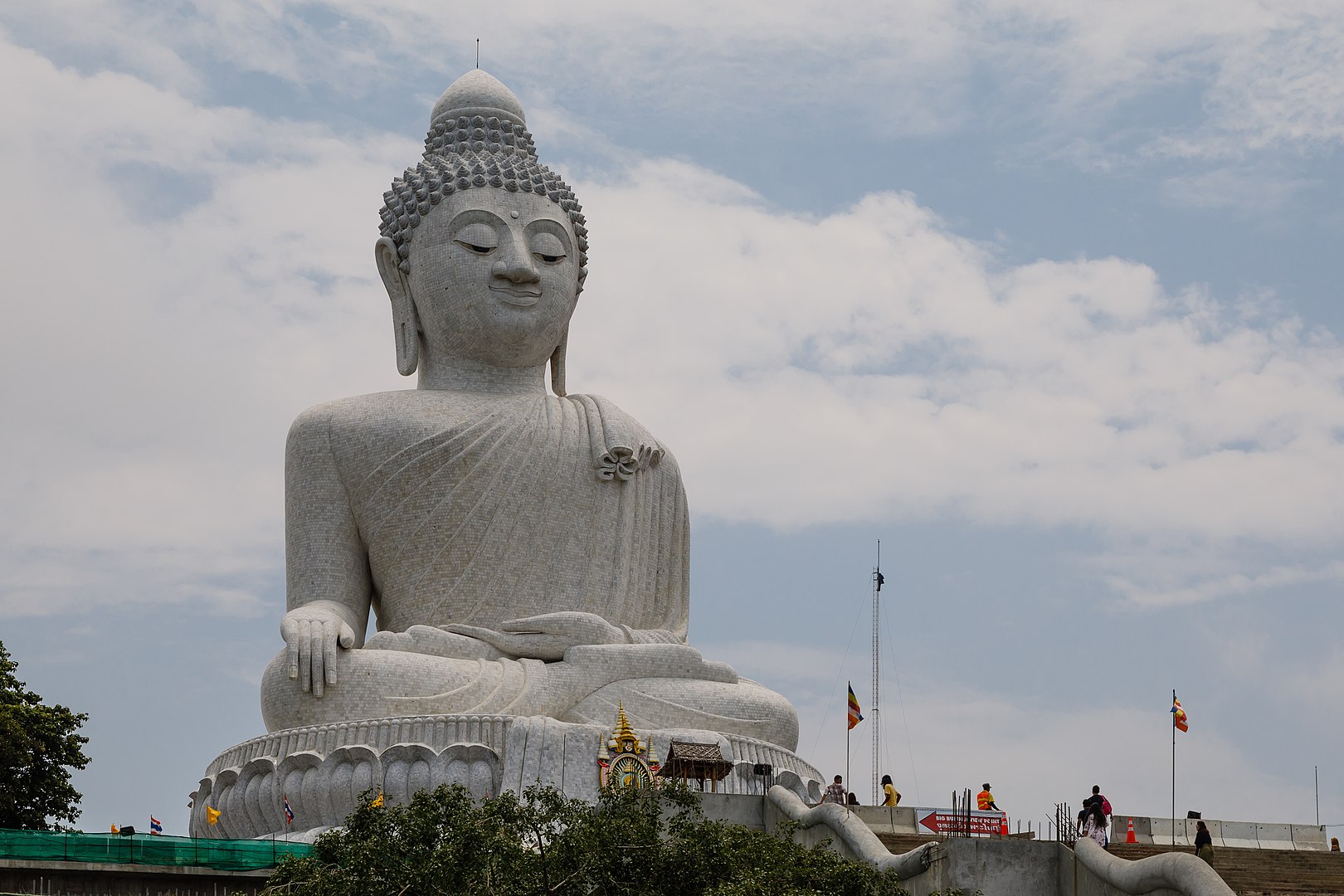
The Phuket Big Buddha Statue (Phra Phutta Ming Mongkol Akenakiri) is an impressive structure located on the island of Phuket in southern Thailand, and is known as the third tallest Buddha statue in the country. Standing at 45 meters tall and 25.45 meters wide, it draws attention. Construction began in 2004 and was completed in 2014. Covered in Burmese white marble, this statue sits atop Nakkerd Mountain and overlooks Ao Chalong Bay. The statue depicts Gautama Buddha in the “Buddha defeating Mara” position (Maravijaya Mudra).
The Phuket Big Buddha Statue is impressive not only for its size but also for its location and surroundings. At an elevation of 400 meters, this site offers panoramic views of Phuket Island, providing magnificent views of Chalong Town, Karon Beach, and the Andaman Sea. Visitors can walk around the statue, pray, and meditate. The temple is also regarded as an important symbol reflecting Thailand’s religious and cultural heritage.
11. Phang Nga Bay National Park
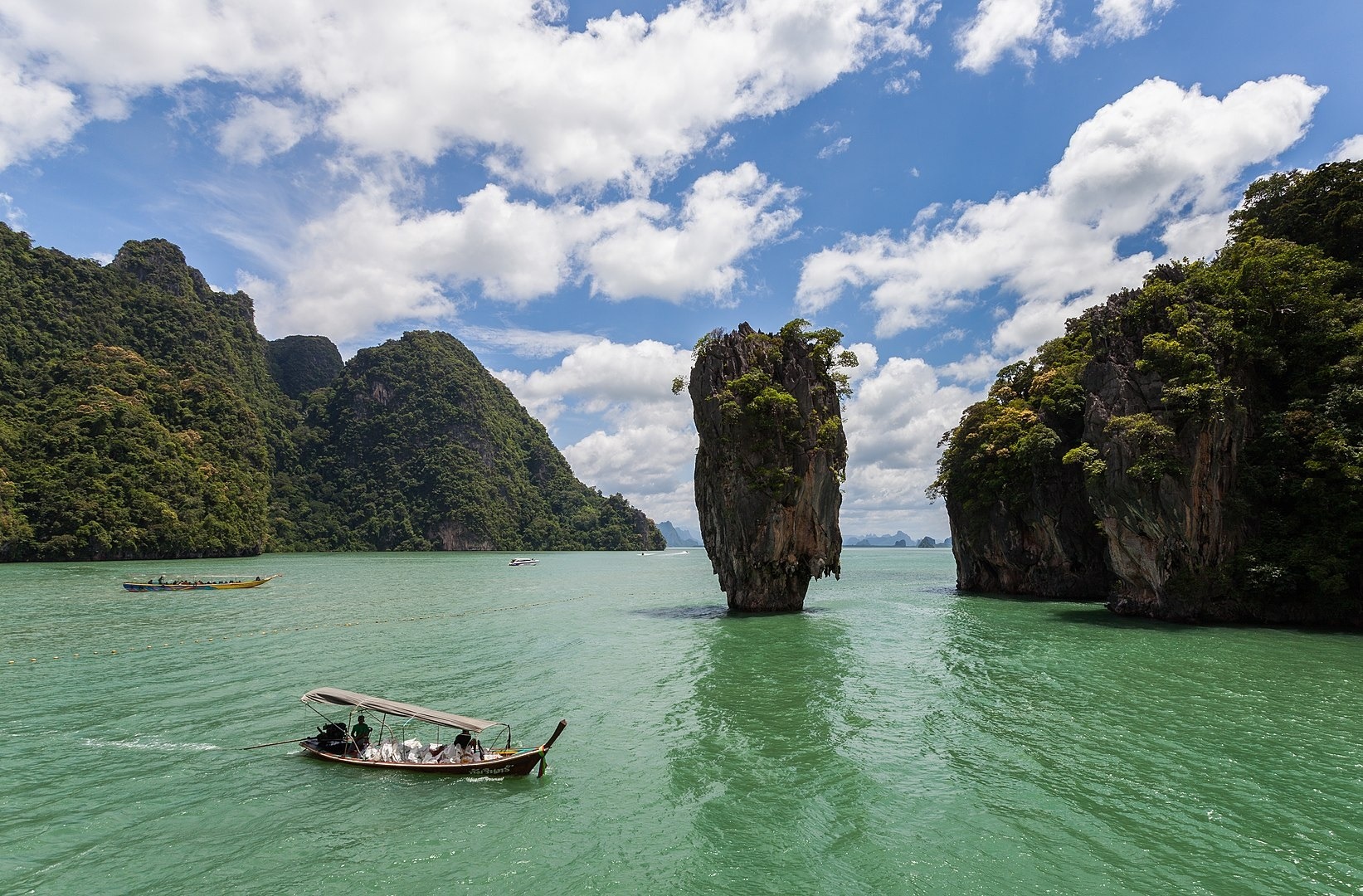
Phang Nga Bay National Park (Ao Phang Nga National Park) is a marine national park located in Phang Nga province in southern Thailand, established in 1981. Covering an area of approximately 400 km², the park is situated in the Andaman Sea and consists of more than 42 islands. The region is famous for its steep limestone cliffs, caves, lagoons, and mangrove forests. The park’s most well-known feature is Khao Phing Kan and Ko Ta Pu islands, which appeared in the 1974 James Bond film The Man with the Golden Gun and are commonly referred to as “James Bond Island.”
Phang Nga Bay is not only known for its natural beauty but also for its rich biodiversity. The region is home to Thailand’s largest and best-preserved mangrove forests, which act as a natural barrier against storms while providing breeding grounds for numerous marine species. The park is inhabited by 88 species of birds, 82 species of fish, 18 species of reptiles, 3 amphibians, and 17 mammal species, including endangered species such as the dugong, white-handed gibbon, and black-faced dolphin.
Phang Nga Bay is one of Thailand’s most important natural areas due to its natural beauty, biodiversity, and cultural richness. Visitors can explore sea caves by canoe, swim in hidden lagoons, and visit traditional fishing villages. The area offers a unique experience for nature lovers and adventure seekers.
12. Tiger Cave Temple (Wat Tham Sua)
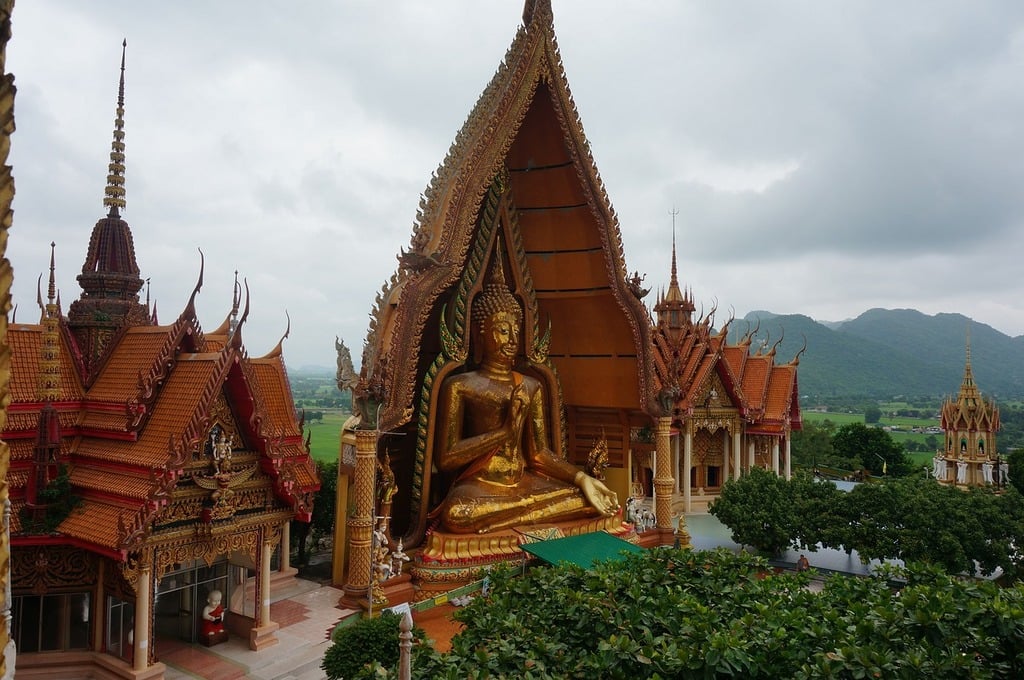
Tiger Cave Temple (Wat Tham Sua) is a Buddhist temple located in the Krabi province of Thailand, renowned for both its religious and natural beauty. Discovered in 1975 by a monk practicing Vipassana meditation, Ajahn Jamnian Seelasettho, the area gets its name from the monk’s sighting of tigers roaming the cave during his meditation. The temple is also known as “Tham Sua,” where “Tham” means cave and “Sua” means tiger. The region is notable for its rich tropical forests, caves, and mountains. It also holds historical significance due to archaeological finds such as stone tools, ceramic fragments, and Buddha footprints.
The most striking feature of the temple complex is the challenging staircase consisting of 1,260 steps. This staircase leads visitors to the top of a 309-meter high hill, where a massive golden Buddha statue and a breathtaking view await. The climb is difficult due to the hot weather and humidity, but the reward at the summit makes the effort worthwhile. The temple is surrounded by caves where meditation monks reside, and the area functions as a center for Vipassana meditation practices. Entry to the temple grounds is free, but voluntary donations are accepted for maintenance and support. Visitors are expected to respect the dress code (covering shoulders and knees) and the temple etiquette during their visit.
13. The Golden Mount (Wat Saket)
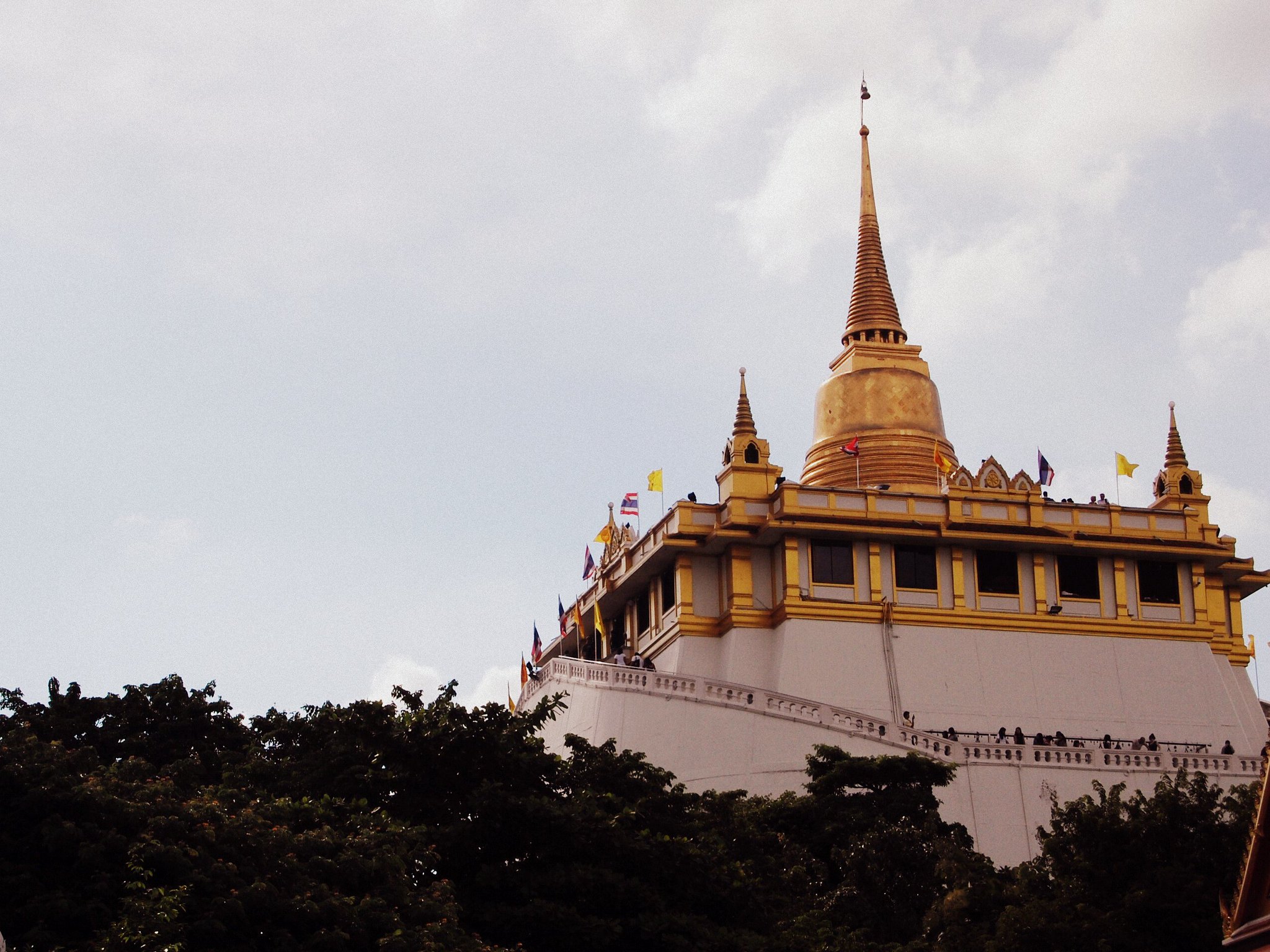
Wat Saket (Golden Mount) is an impressive Buddhist temple located in the Pom Prap Sattru Phai district of Bangkok, offering a panoramic view of the city. One of Thailand’s oldest temples, Wat Saket dates back to the Ayutthaya Kingdom era. It was restored during the reign of King Rama I and received its current name. The temple’s most striking feature is Phu Khao Thong, an artificial hill with 318 steps, crowned with a golden-covered chedi (stupa). This hill is located outside the old city walls of Bangkok and offers a commanding view of the city.
The construction of Phu Khao Thong began during the reign of King Rama III, but the foundation of the structure collapsed due to soft soil. A new structure supported by 1,000 teak trees was built during the reign of King Rama IV. The completion of the current structure dates back to the reign of King Rama V. It is believed that inside the chedi, a tooth of the Buddha brought from India is kept. The temple is famous for the “Hae Pha Khuen That” festival held every November, during which the chedi is draped with a red cloth, and visitors write their names on the cloth while praying.
Visitors can reach the temple by climbing the 318-step staircase that leads to the top. Along the way, statues and figures narrate different aspects of Buddhism and the temple’s history. Once at the summit, visitors are rewarded with a magnificent view of Bangkok. The temple is both a religious center and an ideal spot for those wishing to view the city from above.
14. Sanctuary of Truth
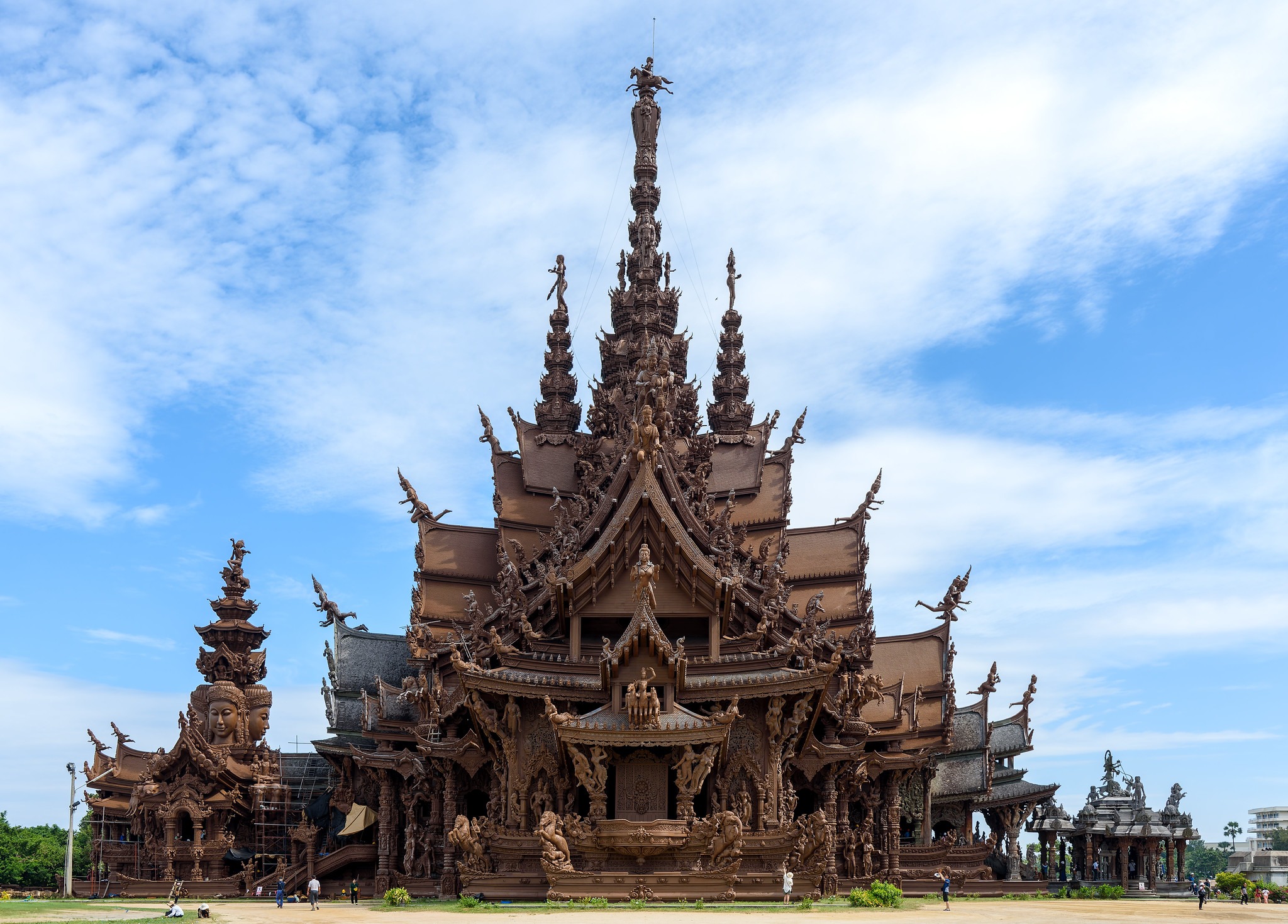
The Sanctuary of Truth is one of the most striking structures in Pattaya, an impressive building that reflects Thailand’s cultural and religious heritage. Construction of this massive wooden structure began in 1981 and was designed and built by Thai businessman Lek Viriyaphan. The temple, constructed entirely from teak wood, is shaped using traditional wood craftsmanship without any metal nails. The completion of the structure is expected by 2025.
The Sanctuary of Truth has four main halls, each representing the teachings and philosophies of Eastern religions such as Hinduism, Buddhism, Taoism, and Confucianism. Each hall is decorated with intricate wooden carvings featuring symbols and figures of the respective religions. For example, the northern hall displays a four-headed statue of Brahma, the western hall contains figures of Hindu gods Brahma, Vishnu, and Shiva, while the eastern hall focuses on family values and moral responsibilities. Visitors can explore these profound meanings through guided tours of the temple.
15. Bang Pa-In Royal Palace
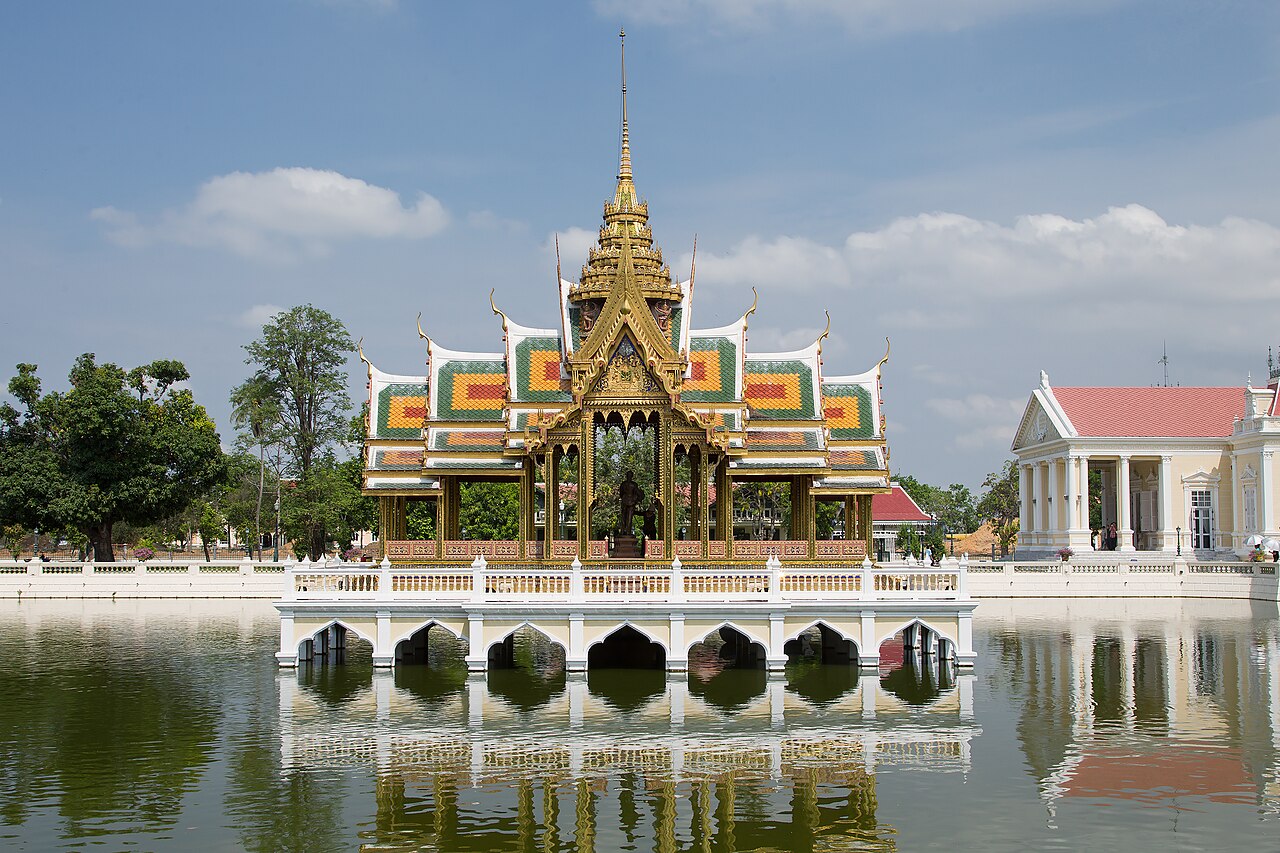
Bang Pa-In Royal Palace is a historic summer palace located on the banks of the Chao Phraya River in the Ayutthaya province of Thailand. It was originally built in the 17th century by King Prasat Thong. However, the palace was abandoned following the fall of the Ayutthaya Kingdom in 1767, until it was rediscovered in the 19th century by King Rama IV (Mongkut) and underwent extensive restoration during the reign of King Rama V (Chulalongkorn). Today, the palace is considered an important cultural heritage site reflecting Thailand’s royal history and architectural diversity.
The palace stands out with its various structures that blend Thai, Chinese, and European architectural styles. Notable structures include the Aisawan Thiphya-Art Pavilion, built in the Thai style and known as the “Divine Seat of Personal Freedom,” Phra Thinang Wehart Chamrun, built in the Chinese style and gifted by Chinese merchants in 1889, and the Phra Thinang Warophat Phiman, built in the neoclassical style. Additionally, across the palace’s riverbank, the Wat Niwet Thammaprawat temple, constructed in the Gothic Revival style and resembling a European church, attracts the attention of visitors.
Bang Pa-In Royal Palace is located about 60 km from Bangkok and 20 km from Ayutthaya. Visitors can reach the palace by train, bus, or boat. The entrance fee is 100 Thai Baht, and golf carts are available for rent. The visiting hours are from 08:30 to 16:00 every day.
Bang Pa-In Royal Palace is a unique destination for those wishing to explore Thailand’s rich history and culture. With its blend of architectural styles, the palace holds great significance both historically and aesthetically.
16. Vimanmek Mansion
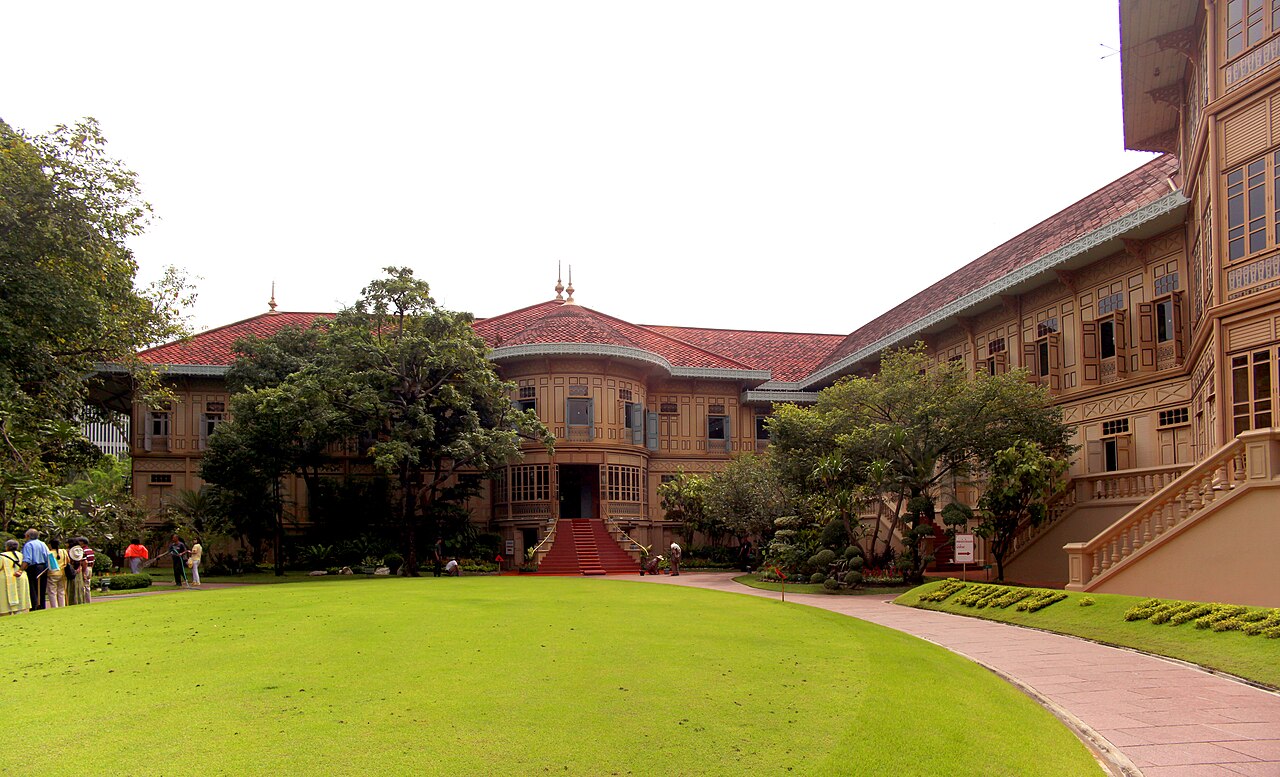
Vimanmek Palace is a historic palace located in the Dusit Palace complex in Bangkok, Thailand, and is known as the world’s largest building made entirely of teak wood. It was constructed in 1900 by King Rama V (Chulalongkorn). The palace was actually created by relocating and reconstructing the Munthatu Rattanaroj Palace from Koh Si Chang Island. The palace is L-shaped, measuring 60 meters in length and 20 meters in height. Its interior reflects an elegant blend of Western and Chinese décor, showcasing the modern Thai architecture of the era.
The palace was restored in 1982 under the leadership of Queen Sirikit and transformed into a museum to commemorate the era of King Rama V and showcase Thailand’s national heritage. However, the palace has been closed to visitors since 2016. According to announcements made in 2019, the foundation of the palace has been dismantled for reinforcement, and plans for its reconstruction were announced. However, it was stated that once these works are completed, the palace will not reopen for public visits.
17. Wat Traimit (Golden Buddha Temple)
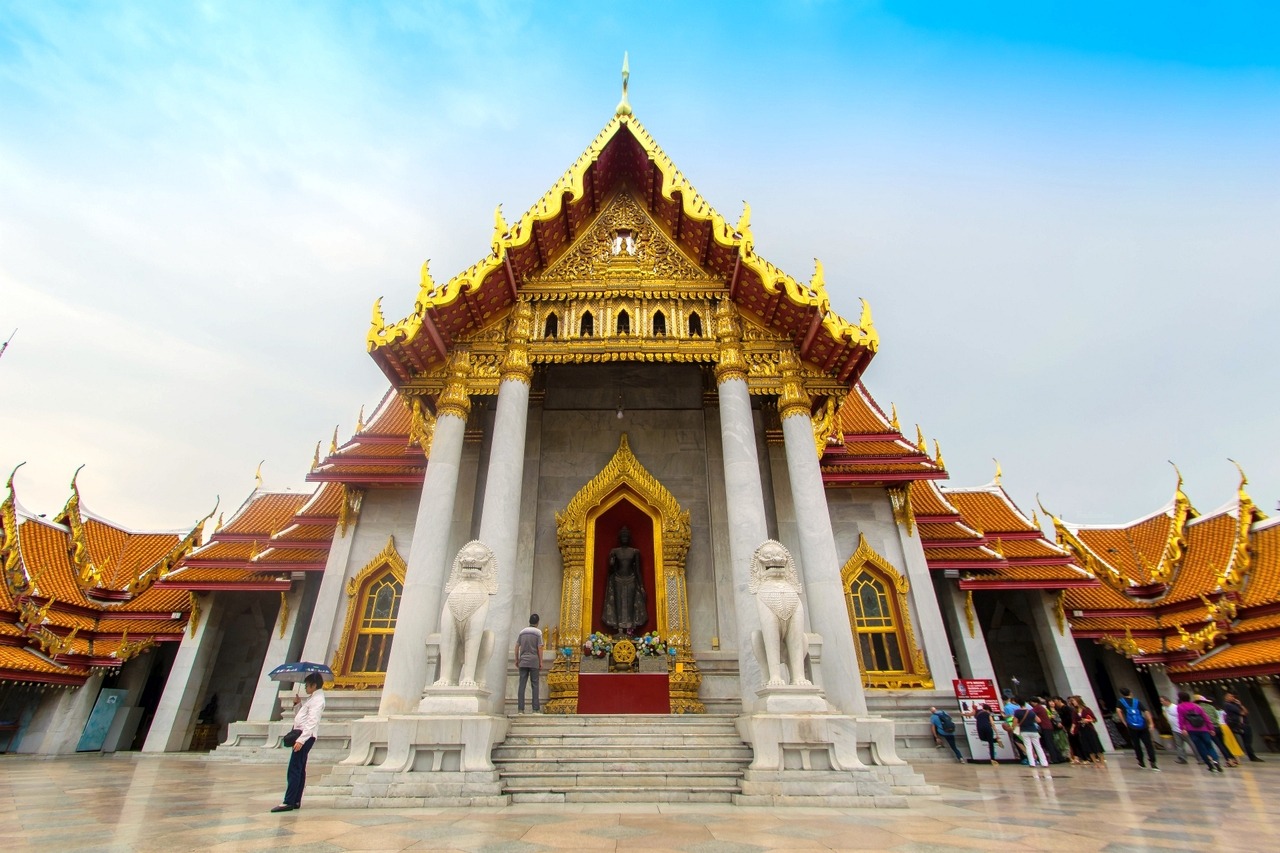
Wat Traimit is an important Buddhist temple located in the Chinatown district of Bangkok, known as the “Golden Buddha Temple.” Officially named Wat Traimit Withayaram Worawihan, it was constructed in the early 19th century and houses Thailand’s largest solid gold Buddha statue. The temple is famous for the statue, which was moved from Wat Phraya Krai in 1935 and was discovered to be made of gold in 1955 by accident. Today, the temple complex includes cultural sites such as the Yaowarat Chinese Heritage Centre and the Golden Buddha Exhibition, alongside the Buddha statue.
The Golden Buddha statue stands approximately 3 meters tall and weighs 5.5 tons. Believed to be from the Sukhothai period, this statue was covered in plaster and glass during the 18th century, around the time of the fall of the Ayutthaya Kingdom, to protect it from enemies. In 1955, when the temple was relocated, the plaster broke, revealing the golden surface. Today, the statue, located on the upper floor of the temple, is an important symbol of Thailand’s religious and cultural heritage.
18. Phuket Old Town
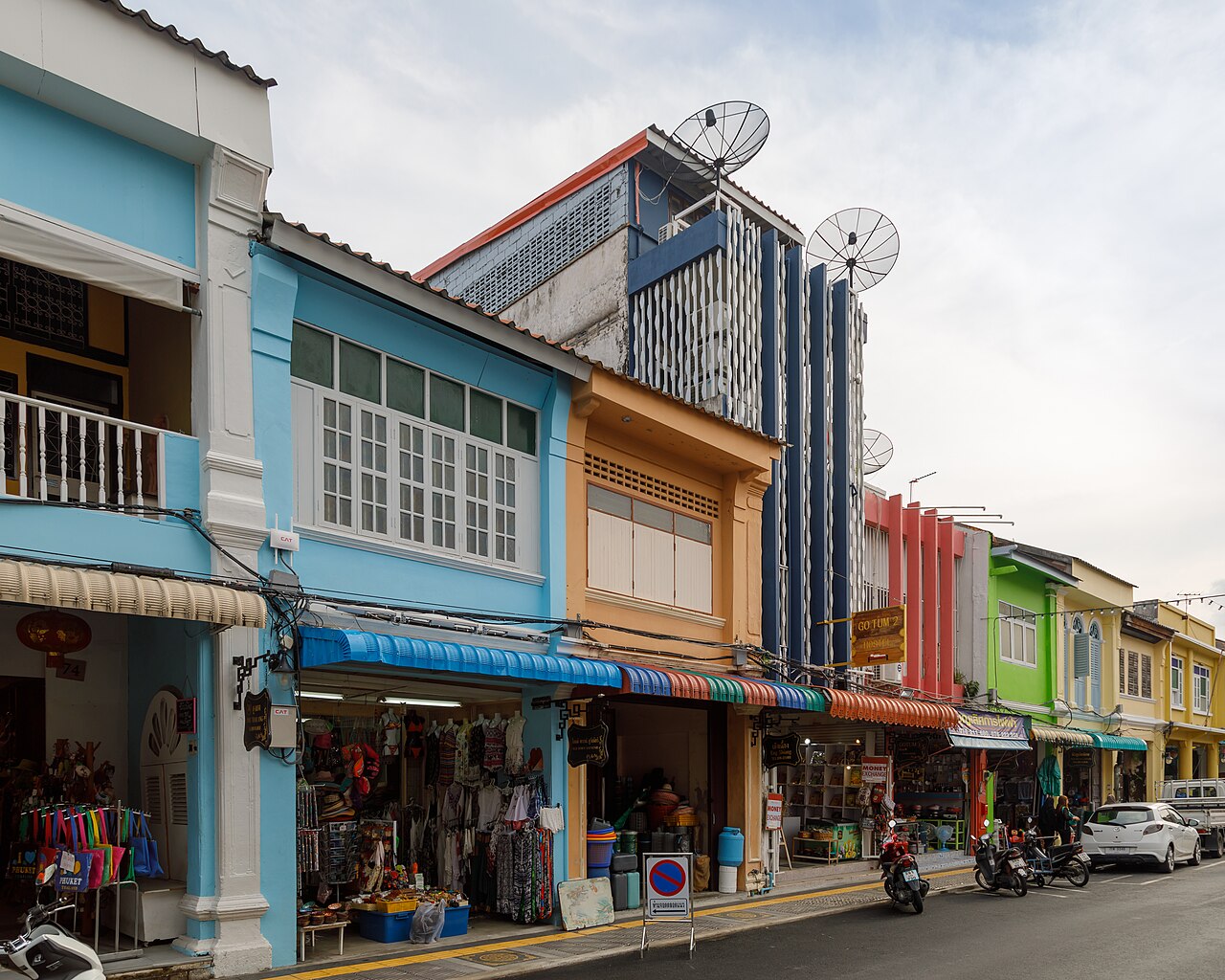
Phuket Old Town is a historic area located in Phuket Town, the capital of Phuket Island in southern Thailand. Shaped by the influence of Chinese, Portuguese, and Malay traders who arrived on the island during the 19th century, when tin mining brought wealth to the region, it boasts a rich cultural heritage.
The most prominent feature of the area is its Sino-Portuguese architecture, which stands out for its colorful facades and intricate craftsmanship. This architectural style is a fusion of Chinese and Portuguese influences, and Phuket Old Town is known for its unique buildings.
Phuket Old Town is famous for its narrow streets, colorful buildings, historic temples, and delicious street food. Thalang Road is considered the heart of the area, and the Lard Yai Market, held every Sunday, showcases local handicrafts, street food, and live performances. Soi Romanee, once known for its red-light district, is now a vibrant street known for its colorful buildings and lively atmosphere. The Phuket Thai Hua Museum is an important museum that tells the story of Chinese immigrants’ arrival in Phuket and the island’s history. One Chun Cafe & Restaurant, located in a 19th-century Sino-Portuguese building, offers a place to experience Phuket’s cuisine.
Phuket Old Town is a district worth exploring, where history, culture, and cuisine blend together. It provides visitors with an in-depth look at Phuket’s past and is an ideal destination for those wishing to explore a different side of the island.
19. Chatuchak Market

Chatuchak Market is located in the Chatuchak district of Bangkok and is Thailand’s largest outdoor market. This market, which hosts approximately 200,000 visitors on weekends, is considered the largest weekend market in the world, with over 15,000 stalls spread across a 35-acre area.
The market began in 1942 with the establishment of Bangkok’s first market and moved to the Chatuchak district in 1982, adopting its current name. It offers a wide range of products across 27 different sections, including clothing, antiques, home goods, food, plants, artwork, and pets. Visitors are advised to use a map to avoid getting lost and to arrive early in the morning.
20. Wat Benchamabophit (Marble Temple)
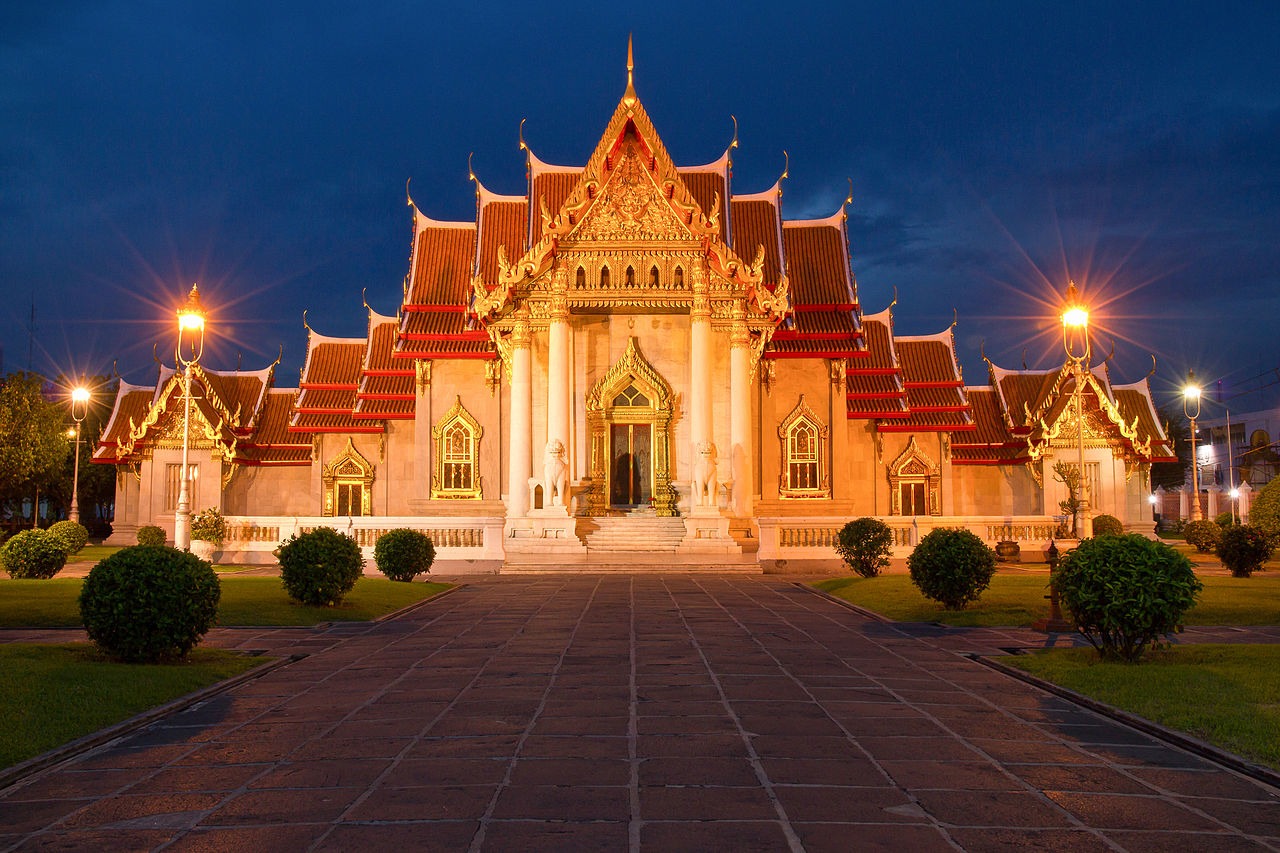
Wat Benchamabophit, located in the Dusit district of Bangkok, is an important Buddhist temple known as the “Marble Temple.” It was commissioned by King Rama V (Chulalongkorn) in 1899, and its design was carried out by his half-brother, Prince Narisara Nuwattiwong. The temple was constructed using white marble imported from the Carrara region of Italy, which is why it is called the “Marble Temple.” Its construction was completed in 1911.
The temple features a design that blends traditional Thai architecture with European influences. The main worship hall (ubosot) stands out with its three-tiered roof, gold-plated decorations, and Gothic-style stained glass windows. Inside, the Phra Buddha Chinnarat, a golden Buddha statue, is housed; this statue is a replica of the original in Phitsanulok, and King Rama V’s ashes are buried beneath it. Surrounding the temple is a gallery displaying 52 Buddha statues, each representing different mudras. Additionally, a Bodhi tree brought from Bodhgaya, India, is also located at the temple.
